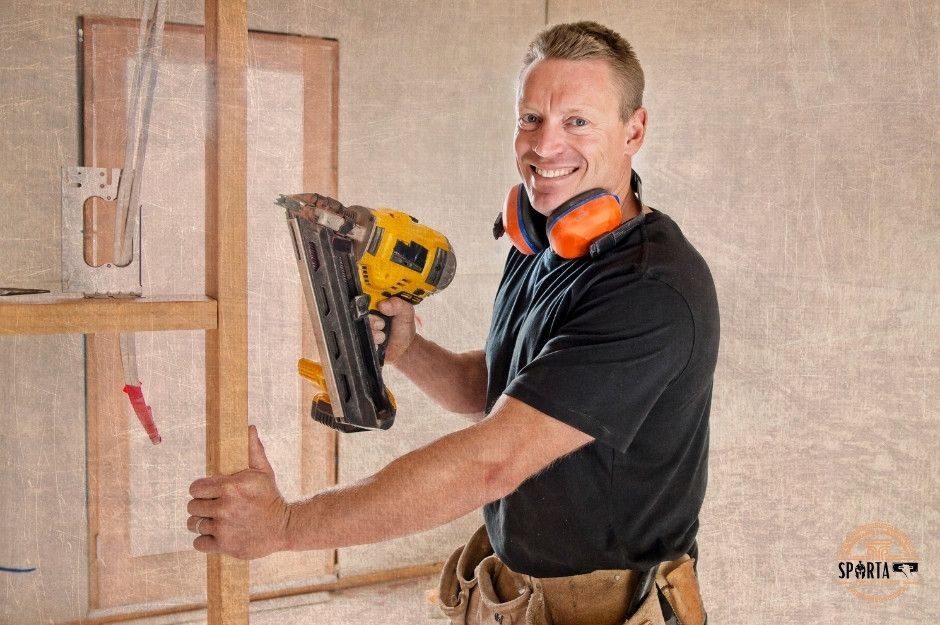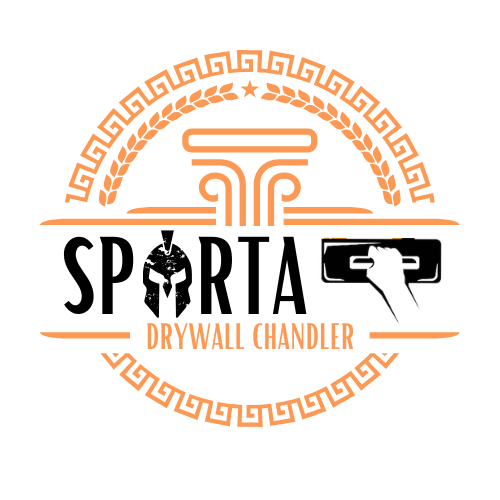Drywall Repair Avondale
High-quality Sheetrock Repair Company in Avondale, Arizona

When your walls or ceilings need repair in Avondale, Arizona, professional drywall services at Sparta Drywall Chandler can address a wide range of issues. From small holes and cracks to extensive water damage, local contractors specialize in restoring your surfaces to pristine condition. You can find skilled technicians who handle everything from basic patch repairs to complete drywall installation and finishing, with most offering quick response times and competitive rates.

Sparta Drywall Chandler (Avondale CP)

Drywall repair requires precision and expertise to achieve seamless results. Whether you need popcorn ceiling repairs, corner bead fixes, or joint repairs, Avondale's drywall specialists use advanced techniques and quality materials to match existing textures perfectly. Many local companies also provide comprehensive drywall installation services for renovations or new construction projects.
Serving Avondale's growing population of 89,334 residents, local drywall contractors understand the unique challenges of this rapidly expanding Maricopa County community. Your drywall problems deserve prompt attention to prevent further damage and maintain your home's appearance. Local Avondale contractors understand Arizona's extreme desert climate challenges, including temperatures that can reach up to 125°F and the occasional dust storms during summer months, and how these conditions affect drywall performance, enabling them to deliver lasting solutions that protect your investment.
Comprehensive Drywall Repair Services in Avondale, Arizona
Professional drywall repair services in Avondale address all types of wall and ceiling damage through specialized techniques and expert craftsmanship. With the city's transformation from a sparsely populated farming community to a major Phoenix suburb since its incorporation in 1946, many homes feature a mix of architectural styles that require specialized repair approaches. Local contractors use industry-standard materials and methods to restore damaged surfaces to their original condition.
Patching Holes and Wall Damage
Small holes from picture hangers or anchors require basic patching with joint compound and sanding for a smooth finish. Larger holes need proper backing support and drywall patches cut to size.
Your repair technician will measure the damaged area and cut a replacement piece slightly larger than the hole. They'll install wood backing if needed to secure the new section.
For textured walls, professionals match the existing pattern using specialized tools and techniques. This ensures the repair blends seamlessly with surrounding areas.
In Avondale's hot desert climate with summer temperatures consistently above 100°F for three consecutive months, drywall can expand and contract significantly, sometimes causing nail pops and small holes that require professional attention. Most patch repairs take 24-48 hours to complete due to multiple coats of compound and proper drying time between applications.
Crack Repair and Sealing
Drywall cracks often appear along seams or corners due to settling or temperature changes. Given Avondale's extreme temperature fluctuations - from winter lows around 40°F to summer highs of 125°F - thermal expansion and contraction create significant stress on drywall systems. Professional repair begins with widening the crack slightly to remove loose material.
Technicians apply fiber mesh tape over the crack followed by multiple layers of joint compound. Each layer requires proper drying time and sanding.
Common crack locations:
- Wall and ceiling joints
- Around window and door frames
- Corner bead separations
- Stress points near structural elements
- Foundation settlement areas (common in Avondale's clay-rich soil near the Agua Fria and Gila Rivers)
Ceiling Repair and Popcorn Ceiling Restoration
Ceiling repairs demand special attention due to gravity and overhead working conditions. Your repair team will use proper support systems and specialized tools for overhead work.
Many homes built during Avondale's rapid growth period from 1980 onward feature popcorn ceilings that were popular during that era. Popcorn texture restoration requires careful matching of the original pattern. Professionals can either patch damaged areas or remove and reapply texture across entire ceiling sections.
Water stains on ceilings need thorough investigation to ensure the source is fixed before repairs begin. This may involve coordination with plumbing specialists.
Water Damage Assessment and Remediation
Avondale receives an average of only 8.93 inches of precipitation annually, but when the North American Monsoon hits during July and August, sudden heavy rains can cause water intrusion issues in homes. Water-damaged drywall often requires complete removal of affected areas to prevent mold growth. Your contractor will test surrounding areas for moisture content using specialized meters.
Steps in water damage repair:
- Remove wet materials
- Dry and treat the area
- Install new drywall
- Match texture and paint
Professional teams coordinate with water mitigation specialists when needed to ensure proper drying before new installation begins.
Materials are selected based on the room's moisture exposure risk, with moisture-resistant drywall recommended for bathrooms and basements.
Expert Drywall Installation Solutions
As Avondale continues its remarkable growth trajectory - experiencing over 114% population growth in the past decade as one of Maricopa County's fastest-growing cities - new construction and renovation projects require expert drywall installation services. Professional drywall installation requires precise measurements, proper techniques, and high-quality materials to create smooth, durable walls and ceilings that meet building codes and industry standards.
New Wall and Ceiling Installation
Your new drywall project starts with selecting the right type and thickness of drywall sheets for your specific application. Standard 1/2-inch drywall works well for most interior walls, while 5/8-inch fire-resistant drywall is required for garage walls and ceilings.
In Avondale's residential developments, which range from historic ranch-style homes along Western Avenue to modern subdivisions, contractors must adapt their installation techniques to match various architectural styles and building codes. The installation process begins with careful room measurements and marking of studs, electrical boxes, and other obstacles. You'll need to account for doors, windows, and any built-in features during the planning phase.
Professional installers examine the framing to ensure it's square and properly spaced at 16 or 24 inches on center. This spacing provides optimal support for the drywall sheets and minimizes the risk of sagging or warping.
Drywall Hanging and Securing
Start by installing ceiling panels first, using a drywall lift for safety and precision. Position sheets perpendicular to the joists to maximize strength and minimize seams.
Secure panels with drywall screws placed every 12 inches along studs and joists. Screws should be set slightly below the surface without breaking the paper face.
Essential securing tools:
- Drywall screwgun
- 1-1/4 inch drywall screws
- T-square
- Utility knife
- Pencil
Precision Cutting and Fitting
Measure twice and cut once using a sharp utility knife and straight edge for clean, accurate cuts. Score the paper face deeply and snap the board along the scored line.
Create precise cutouts for electrical boxes using a drywall saw or rotary tool. Allow 1/8-inch clearance around boxes for proper fit.
Common cutting patterns:
- L-cuts for corners
- Circular cuts for light fixtures
- Rectangular cuts for outlets
- Notches for door frames
Always wear appropriate safety gear including safety glasses and a dust mask when cutting drywall.
Professional Drywall Finishing and Texture Matching
With Avondale's location at 33° 26 '01"N 112° 20' 59"W in the heart of the Sonoran Desert, the city's year-round sunshine and stable high-pressure systems create ideal conditions for drywall compound curing, though contractors must account for rapid moisture evaporation during application. Professional drywall finishing transforms raw sheetrock installations into smooth, attractive walls through precise taping, careful sanding, and exact texture matching techniques. A quality finish creates the foundation for beautiful interior spaces.
Joint Taping and Mud Application
Joint compound application requires careful attention to detail and proper technique. You'll need multiple thin coats of mud rather than one thick layer to achieve the best results.
Start by embedding paper tape into a base coat of joint compound over all seams and corners. Apply the tape with firm pressure to remove air bubbles and excess compound.
In Avondale's arid climate with humidity levels often below 20%, joint compounds can dry faster than expected, requiring contractors to work in smaller sections and occasionally mist the air to slow drying time. Each subsequent coat should be slightly wider than the previous one, feathering the edges to blend with the surrounding wall. Allow 24 hours of drying time between coats.
Professional Tips for Joint Compound:
- Use all-purpose compound for first coats
- Switch to topping compound for final coat
- Keep tools clean between applications
- Maintain consistent compound thickness
Sanding for Seamless Surfaces
Sand between coats using progressively finer grit sandpaper. Start with 120-grit for initial smoothing, then move to 150-grit for intermediate layers.
Use light pressure when sanding to avoid creating grooves or damaging the paper face of the drywall. Focus on achieving a flat surface without ridges or tool marks.
Essential Sanding Equipment:
- Sanding pole for ceilings
- Hand sanding block
- Dust mask and eye protection
- Bright portable lighting
Texture Matching and Blending
Matching existing textures requires careful observation and specialized tools. Take time to study the pattern, depth, and consistency of the surrounding texture.
Test your texture mix and application technique on a scrap piece of drywall before working on the wall. Adjust the compound consistency until you achieve a match.
Common texture types include:
- Orange peel
- Knockdown
- Skip trowel
- Popcorn ceiling
Use proper lighting angles to check your work. View the surface from multiple angles to ensure the new texture blends seamlessly with existing areas.
Specialized Repair Techniques and Materials
Serving communities from the historic Coldwater Stage Station area to modern developments near Interstate 10 (which provides access to Downtown Phoenix just 15 miles east), Avondale contractors must be versed in repair techniques for both vintage and contemporary construction methods. Professional drywall repair requires specific techniques and high-quality materials to achieve seamless results. Expert contractors use specialized tools and proven methods to address various wall and ceiling damage types.
Corner Bead and Edge Reinforcement
Metal or vinyl corner beads protect and strengthen drywall edges and corners from impact damage. When installing new corner beads, secure it with proper fasteners every 6-8 inches along both sides.
For damaged corner bead repair, remove the damaged section carefully using tin snips. Cut a new piece to match the exact length needed.
Apply joint compound in thin layers over the new corner bead. Sand between coats to maintain a smooth transition between the wall surfaces.
Popcorn Ceiling Patchwork
Begin popcorn ceiling repairs by scraping a 2-inch border around the damaged area to create a clean edge. Apply a base coat of joint compound to the repair area and let it dry completely.
Mix the popcorn texture material with water to match your ceiling's existing texture. Test the consistency on a scrap piece first.
Use a hopper gun or specialized texture sprayer to apply the popcorn material. Spray in a circular motion to blend the new texture with the existing ceiling.
Addressing Unique Drywall Issues
Water-damaged drywall in Avondale often results from the intense monsoon rains that can deliver over an inch of precipitation in a single storm, overwhelming drainage systems in this desert community that averages less than 9 inches of annual rainfall. Water-damaged drywall requires complete removal of affected areas and thorough drying before repairs begin. Test surrounding areas for moisture content using a moisture meter.
For stress cracks at wall joints, use fiber mesh tape and multiple thin coats of joint compound. This flexible repair method helps prevent future cracking.
Deep gouges from furniture or equipment moves - common in Avondale's growing residential and commercial sectors - need V-shaped cuts to remove loose material before filling. Apply setting-type compound first, followed by regular joint compound for the finish coats.


